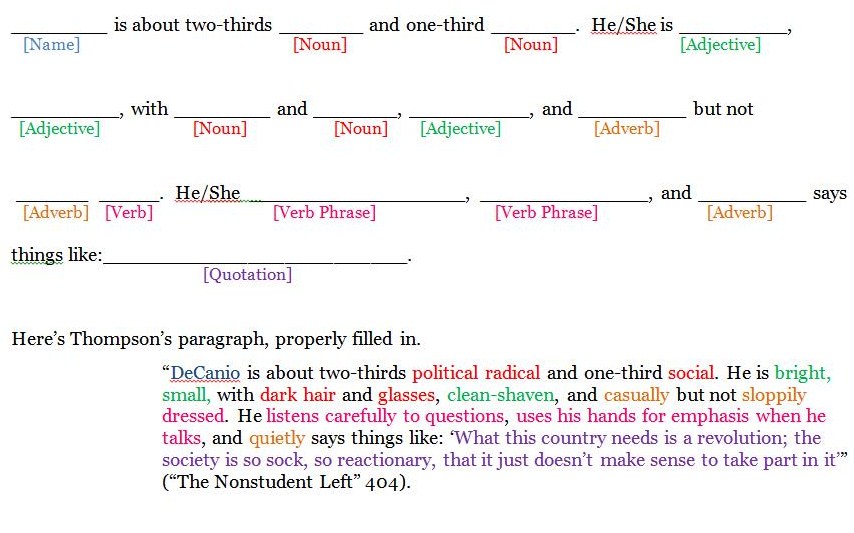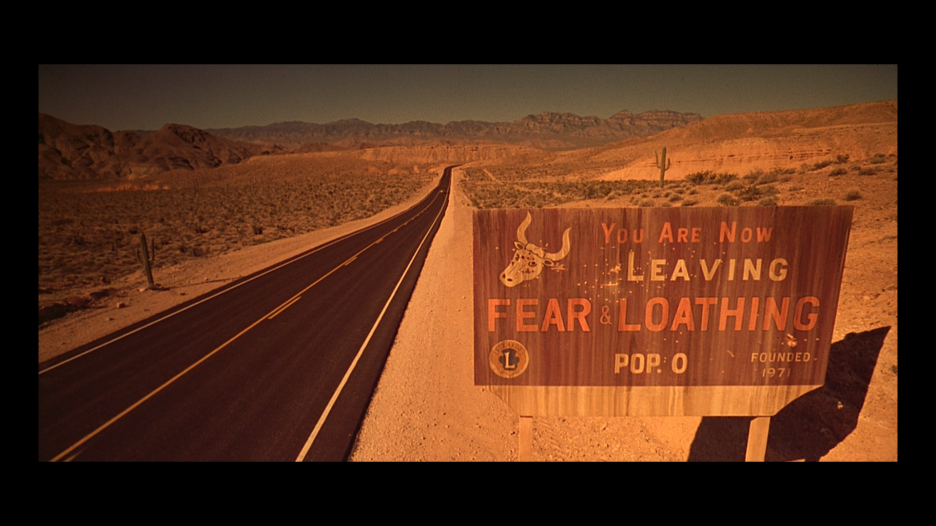I’ve been thinking lately about one of the many useful comments my adviser made about the failed novel I submitted in the last semesters of my MFA program. She told me I’d shown bad manners. Instead of organizing the book into chapters, I used stick figure drawings to mark breaks between sections. No real respite for the reader. Just a tiny figure, vaguely feminine; she looks a bit like she’s running from something.
 Believe it or not I had a reason for this—just not a particularly well thought-out reason. The Bad Manners jab was apt; I was trying to get away with something.
Believe it or not I had a reason for this—just not a particularly well thought-out reason. The Bad Manners jab was apt; I was trying to get away with something.
I called up this memory, I think, because this semester I’ve been defining writing for my students as, essentially, trying to get away with things. A lot of bad writing is bad manners, but so is a lot of good writing. In the first book we read this semester, The Symposium, Plato shows terrible manners: instead of beginning his dialogue at the actual party, he drops us in the middle of a street, where Apollodorus is telling a story about being asked to tell a story about the symposium; not that Apollodorus attended the event; he heard it all from Aristodemus, who did attend but fell asleep halfway through. Also, the party happened 10 years earlier.
There’s a reason for this weird frame, and a good one (good if you like Platonic theory, anyway, or if you simply enjoy seeing form overlap with content), but I still think it’s fair to call Plato a good writer behaving badly. He gets away with it because this is how good writing and good writers evolve: through risk-taking and convention-breaking.
Even beginning writers, I think—especially beginning writers, perhaps —need to take risks with what they write. Need to be willing, at least, to link writing with risk, with innovation, with unconventionality. Need to see that words are materials that they can use to make things, and to make things happen. My students had some trouble imitating the ironic instability of Plato and Socrates, but I’m anticipating more success with our second unit, which features a writer who is both more accessible and more obviously sympathetic to the definition of writing as getting away with things: Hunter S. Thompson. It seems to me that being a talented writer is what made HST believe he could get away with a lot, on and off the page: screaming Revelation verses from a hotel balcony, say, or threatening a big-box electronics store, or shooting his ashes out of a cannon.
There are downsides to assigning HST in a freshman composition course at Georgia Tech, of course. Thompson’s domain is drugs and US politics; he’s best known for his pull-no-punches portraits of Richard Nixon and his bitterly but beautifully nostalgic eulogies to the American Dream. Around half of my students were raised outside the United States; the locals may enjoy a slight but ultimately trivial advantage: not all Georgia Tech freshmen are politically apathetic, but they rarely advertise their knowledge of and engagement with current political affairs, much less the 1960s and 70s politics in which Thompson was most deeply invested.
So what I’ve tried to do is emphasize the creativity and the craft of Thompson’s writing as much as, probably more than, the content. As much as his fear and loathing disheartens, his prose uplifts. (Then it slaps you around a bit, dizzies you, occasionally stuffs you in a cannon and shoots you into space.)
Thompson’s aggression on and off the page can be grating, but it also makes him a good model for students timid or skeptical about writing with attitude. I’m not looking for diatribes against elected officials, but I do want to see in student writing a more generous engagement with the material.
The creative writing exercises I’ve assigned this semester may, I think, be working to encourage this engagement. It’s a little odd, because I was never crazy about the in-class writing or discussion prompts favored by some of my creative writing professors in college. On the first day of my first fiction class, we had to draw pictures of our souls on 3 by 5 notecards. I drew a ship inside a bottle, though I can’t remember if my soul was supposed to be the ship, or the bottle, or both. Later that semester we had to complete the analogy, _____ is to heartache as forest is to bench (Yes, my first creative writing teacher stole most of her prompts from Lorrie Moore stories). In my first MFA seminar, we spent a day writing short stories from the point of view of famous authors. I chose Ayn Rand so I could imitate her perverse mingling of sentiment and ego; I wrote her unpretty, on a train, falling passionately in love with her own type writer. Someone else chose Hemingway and made him use the expression “super fun,” which was hilarious. At the end of the story, he and Fitzgerald teamed up to invent Friendster.
These exercises are like the stretches you do before exercising; they get you in the writing zone, get you thinking of yourself as a maker, even if what you’re making is not very good. This semester, I’ve given my students a few creative-writing exerices as warm-ups to larger projects. We spent one day, for example, practicing the cut-up method on speeches from The Symposium. Last week, students interviewed and then wrote character portraits of each other, using a template drawn partly from HST and partly from MadLibs.
 Not every student got into the spirit; several limited themselves to bland descriptions, perhaps worrying about offending or embarrassing their partners with overly inventive descriptions. Still, there was some memorable writing going on; this mostly blank template did inspire some students to risk some odd and inventive combinations. I learned that Ricardo is two-thirds soccer and one-third food. Apparently Shreya “gets sidetracked by shiny things, second-guesses herself, and enthusiastically says things like: ‘My legs always feel like Jello.'” A few other memorable portraits:
Not every student got into the spirit; several limited themselves to bland descriptions, perhaps worrying about offending or embarrassing their partners with overly inventive descriptions. Still, there was some memorable writing going on; this mostly blank template did inspire some students to risk some odd and inventive combinations. I learned that Ricardo is two-thirds soccer and one-third food. Apparently Shreya “gets sidetracked by shiny things, second-guesses herself, and enthusiastically says things like: ‘My legs always feel like Jello.'” A few other memorable portraits:
- Mike is about two-thirds comedian and one-third psychologist. He is creepy, blonde, with pastel yellow shorts and toe strapless chacos, awkward, and zealously but not bizarrely curious. He sticks his tongue out when he thinks, has a deep hyena laugh, and mockingly says things like: “That is such a Maggie thing to say”.
- Clay is about two-thirds conversationalist and one-third political bystander. He is lanky, dark-haired, with glasses and facial hair, confident, and sarcastically but not sadistically human. He speaks with soft assurance, focuses on empty space as if it were what he was discussing, and wholeheartedly says things like: “I just don’t like dumb people”.
- Manuel is about two-thirds sarcasm and one-third hipster. He is intelligent, unique, with a beard and an old-school hairstyle, meticulous, and usually but not always funny. He likes to make people laugh, be the center of attention, and loudly says things like: “For the next time, throw the chair right into my nose.”
- Soumil is about two-thirds buddy and one-third consoler. He is tall, lanky with jet-black hair and a beard, and carelessly but not shabbily dressed. He zones out at times, forgets where he is, and suddenly says things like: “Are we supposed to submit the homework today?”
- Nick is about two thirds boyish charm and one third slacker. He is curly haired, gapped toothed, with deep brown eyes and secret dimples, confusing, outgoing but not an open book. He fidgets when he’s nervous, runs his hands through his hair far too often, and wistfully says things like: “The view is great from up here.”
I was impressed by these character portraits because I see them as imitations not of Thompson’s aggression but his generosity. He was deeply interested in people; even the ones he didn’t like he could do a weird kind of justice to on the page. That’s what matters to me most in their next assignment, I’ve told my students—that they be generous on the page. “Going Gonzo” is the assignment title—it’s participant journalism. They’ve got to report on and embed themselves in a story—like HST, but without the LSD. My current worry is that I’ve over-emphasized the personal investment aspects of this assignment to the detriment of the journalistic aspects. The voice of the reporter has to be there–that voice that tells you what you’re reading is news. It may also be bluster, fiction, hyperbole, propaganda, personal reflection and/or confession, but it is nevertheless news with a social value. Generosity and Rhetorical Awareness go hand in hand. “Do it now,” says Thompson. “Pure gonzo journalism.” Which I take to mean, Don’t neglect your responsibility to your audience as you go completely off the rails. Jerome Klinkowitz says it better:
The quick cut, the strategic use of digression, the ability to propel himself through a narrative like a stunt driver, steering with the skids so that the most improbable intentions result in the smoothest maneuvers, the attitude of having one’s personal craziness pale before contemporary American life — all of these elements combine to define, as best one can, the peculiar energies unique to the Gonzo writer.
Fear and Loathing in Las Vegas is the perfect example of this “strategic use of digression.” The whole thing is a bad trip, but instead of skidding into ruin it steers into clarity, thanks to the few exquisitely precise passages that appear like road signs on a wild path. The “wave speech” is the most well-known:
Strange memories on this nervous night in Las Vegas. Five years later? Six? It seems like a lifetime, or at least a Main Era — the kind of peak that never comes again. San Francisco in the middle sixties was a very special time and place to be a part of. Maybe it meant something. Maybe not, in the long run . . . but no explanation, no mix of words or music or memories can touch that sense of knowing that you were there and alive in that corner of time and the world. Whatever it meant. . . .
History is hard to know, because of all the hired bullshit, but even without being sure of “history” it seems entirely reasonable to think that every now and then the energy of a whole generation comes to a head in a long fine flash, for reasons that nobody really understands at the time — and which never explain, in retrospect, what actually happened.
My central memory of that time seems to hang on one or five or maybe forty nights — or very early mornings — when I left the Fillmore half-crazy and, instead of going home, aimed the big 650 Lightning across the Bay Bridge at a hundred miles an hour wearing L. L. Bean shorts and a Butte sheepherder’s jacket . . . booming through the Treasure Island tunnel at the lights of Oakland and Berkeley and Richmond, not quite sure which turn-off to take when I got to the other end (always stalling at the toll-gate, too twisted to find neutral while I fumbled for change) . . . but being absolutely certain that no matter which way I went I would come to a place where people were just as high and wild as I was: No doubt at all about that. . . .
There was madness in any direction, at any hour. If not across the Bay, then up the Golden Gate or down 101 to Los Altos or La Honda. . . . You could strike sparks anywhere. There was a fantastic universal sense that whatever we were doing was right, that we were winning. . . .
And that, I think, was the handle—that sense of inevitable victory over the forces of Old and Evil. Not in any mean or military sense; we didn’t need that. Our energy would simply prevail. There was no point in fighting — on our side or theirs. We had all the momentum; we were riding the crest of a high and beautiful wave. . . .
So now, less than five years later, you can go up on a steep hill in Las Vegas and look West, and with the right kind of eyes you can almost see the high-water mark — that place where the wave finally broke and rolled back.
The ellipses are all Thompson’s; I can’t bear to cut into that speech. It consistently shows up in my Best Writing Christine Has Seen top-10 list, in between Robert Fagles’s translation of Cassandra’s speech from The Oresteia
(Oh men, your destiny.
When all is well a shadow can overturn it. When trouble comes a stroke of the wet sponge,
and the picture’s blotted out. And that, I think that breaks the heart.)
and that part in The Tempest about “a sea change / into something rich and strange.”
…
Creative writing can be incredibly self-indulgent. Some of the least generous people I’ve ever met have been creative writers. During my MFA program, any workshop was equally split between people who gave useful feedback and pretentious jerks who sat in silence, who might correct your spelling or scrawl next to random paragraphs the word “more” with a question mark. I remember getting a poem back from one guy who, in lieu of comments, drew googly-eyed faces all over my draft. Later that year, he wrote a play where the male protagonist gave birth to a trumpet, and then played it, expertly, immediately after the labor. I don’t know what it meant, but I’m pretty sure it was sexist.
Still, after teaching composition for seven years, I’m willing to offer my students a platform for self-indulgence if it means they stop asking me the question, “How long does it have to be?” The first time I gave my Gonzo assignment, I asked for at least 3 pages. Every student wrote beyond the minimum. One turned in a 19-page essay (single-spaced) about Bonnaroo. This semester, I’ve seen a couple rough drafts already that are over 10 single-spaced pages. They’re fantastic. Totally gonzo. One drops between paragraphs the following refrain:
The stream flows. The fish gets pushed along. Why is there a fish?
His stream of consciousness is a real stream—the piece is about a crew competition. But it’s about a crew competition the way that HST’s The Kentucky Derby is Decadent and Depraved is about the Kentucky Derby—that is, not so much at all. “[W]e didn’t give a hoot in hell what was happening on the track,” Thompson admits halfway through that piece; “We had come there to watch the real beasts perform.” One of those beasts is, of course, Thompson himself; the story ends with the sound of “crazed laughter,” the smell of Mace, Thompson shoving his illustrator out the passenger side of his car, screaming curses and telling this “scumsucking foreign geek” that “We can do without your kind in Kentucky.” Bad manners, no doubt about it. But you’ll never look at the Derby the same way again.



